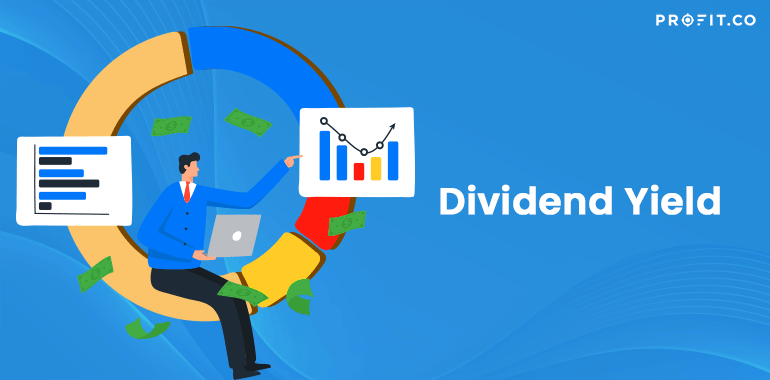Every fundamental analysis tool works differently for every investor – so in order to understand the stocks, you need to know how to calculate them properly. High-growth stocks aren’t likely to show up on any stock screens, no matter how hard you want to find the dividend characteristics.
As a value investor, or someone that wants to know the dividend income, you might want to know certain measurements that are important for you – one of them being the dividend yield.
The purpose of the dividend yield is to express how many dividends are paid out each year from within the company. This financial ratio is calculated directly against its share price.
The Dividend Yield Formula
The dividend yield appears as a percentage. It is calculated after a division of the monetary sum of dividends by its value on the market per every share. Henceforth, the formula looks something like this: Dividend Yield = Cash Dividends per Share / Market Value per Share.
Let’s say, for example, that your business has a $14 current market price for every share. Last year you had 1,000 shares outstanding, for which you paid $15,000. The calculations would look something like this: 1 = $15 / $15. In this case, your yield is $1 – which means that your investors will receive $1 worth of dividends for each dollar they invested in your business. As long as you maintain a steady dividend level, your investors will get 100% returns every year.
The first ratio, cash dividends per share, is generally found on the financial statement of the company. However, depending on the company, they may also appear as distributed gross dividends. In this case, you will need to divide those gross dividends by the average outstanding common stock reported that year.
Analysis of the Dividend Yield
The dividend yield is a technique used for measuring the cash flow that is returning to you every year – for every invested dollar (or whatever currency you are using). In other words, it tells you how much money you are getting with every dividend per dollar.
A business that features a high dividend yield will pay the investors a significant dividend as opposed to the stock’s market value. This means that every investor will receive high investment compensation compared to other dividend stocks that are significantly lower.
Low or high dividends are technically relative when it comes to the company’s industry. Considering that some companies, such as the new or tech companies barely give out any dividends, even a small dividend can offer a high ratio that will bring returns. Technically speaking, however, an investor would like to see a yield that is as high as possible.
Some dividend yields are unnaturally high – which is why you need to be careful whom you are investing with. Some companies will manipulate their yield so that it looks attractive to their investors – at least temporarily. This is why it would be ideal to check the yields over the last few years in order to form a clear idea.
